|
|||
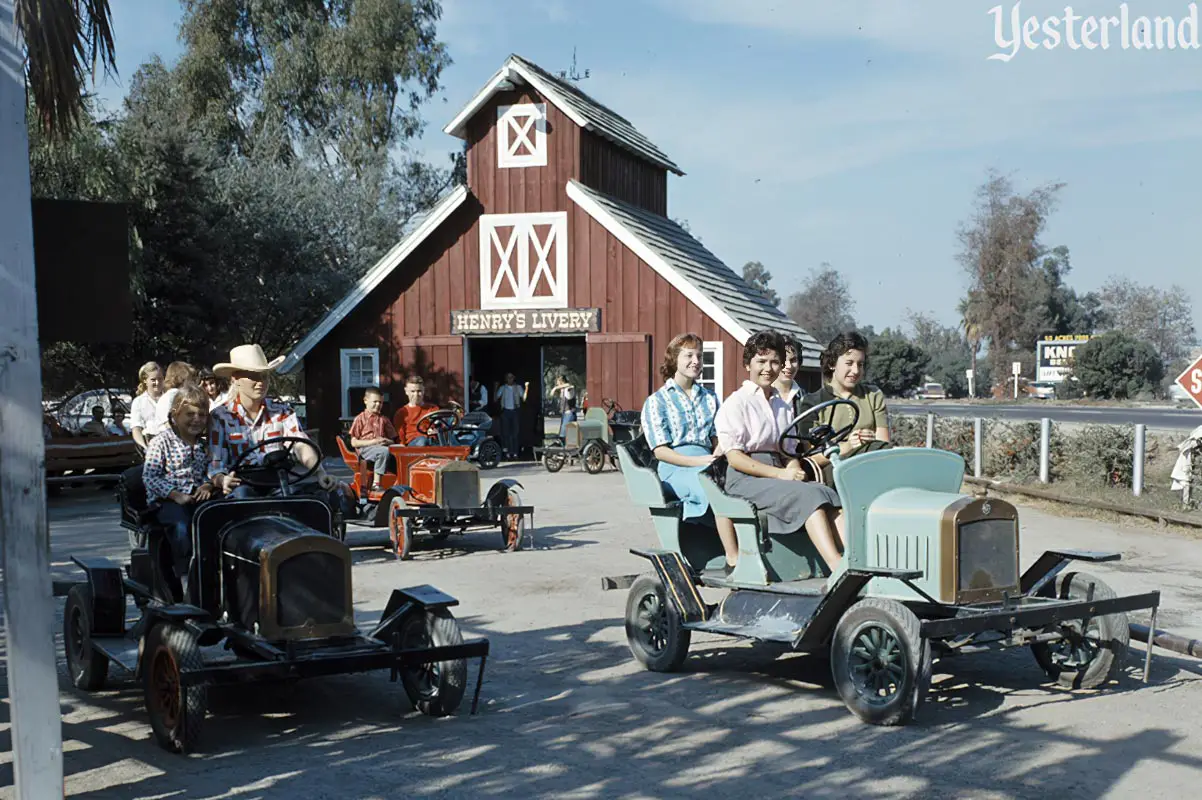
Photo courtesy of the Orange County Archives, from the Knott’s Berry Farm Collection |
|||
|
You might think that car rides at theme parks and amusement parks always have a guide rail down the center of the track. Not this one! You actually get to steer your car—in fact, you have to. |
|||
|
|
|||
|
Welcome to Henry’s Livery. Here, you can drive a horseless carriage replica. You don’t need a driver’s license. The attraction is owned and operated by the Beckman family, one of the park’s many concessionaires. |
|||
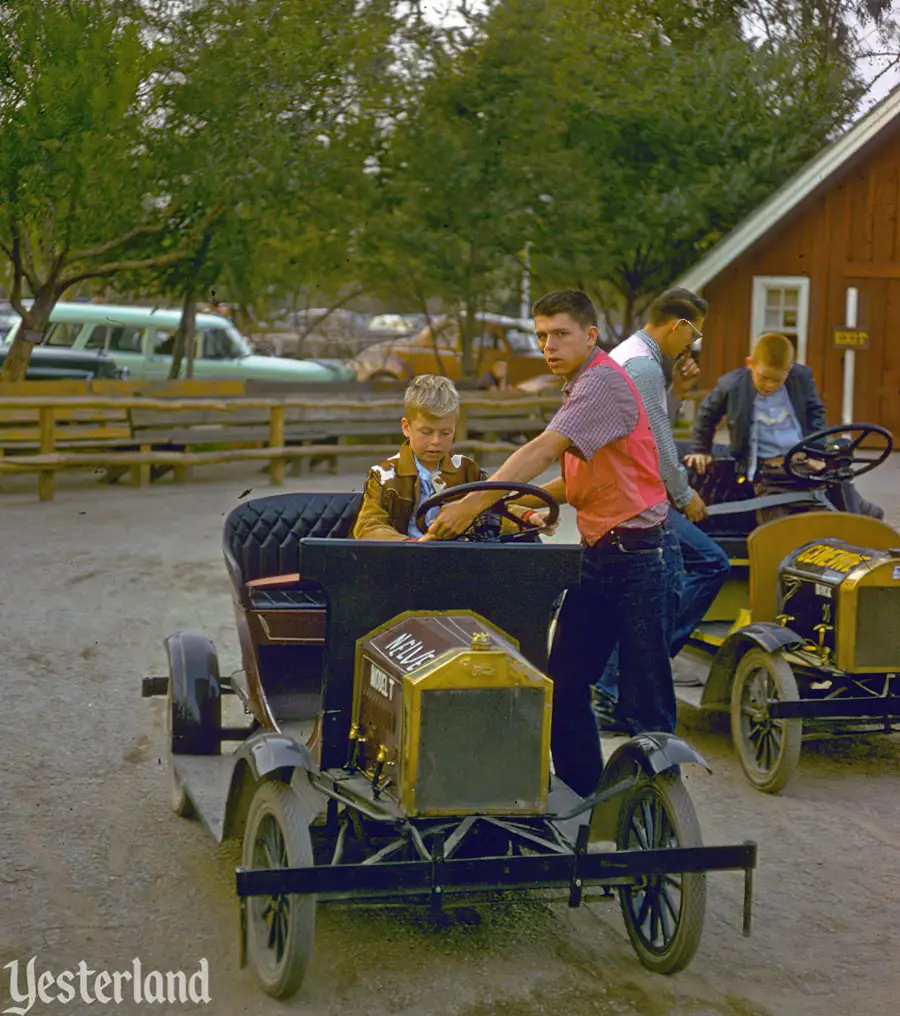
Photo by Charles R. Lympany, circa 1960, courtesy of Chris Taylor Load area |
|||
|
Your ride begins at the red livery barn. It does triple-duty as the garage, machine shop, and ticket office. Each car has a gasoline engine, safety belts, an interlock throttle, and brakes. The driver has full control of the vehicle, which runs from four to five miles per hour. Check out the bumpers. They’re designed to protect the cars and keep drivers safe. But these are not bumper cars. Drive safely. At first glance, you might assume these replicas are all based on the Ford Model T. But a closer look reveals nine different models, including these:
Okay, they’re not exactly the same as their namesakes. These replicas are 2/3 actual size. It took seven months to custom-build the first nine cars. Each one has a name, such as Katy, Dora, Nell, Nellie, Genevive, Goldie, and Lou. Some cars have seating for two; some for three; and some for four. Drive solo, or load up the seats. |
|||
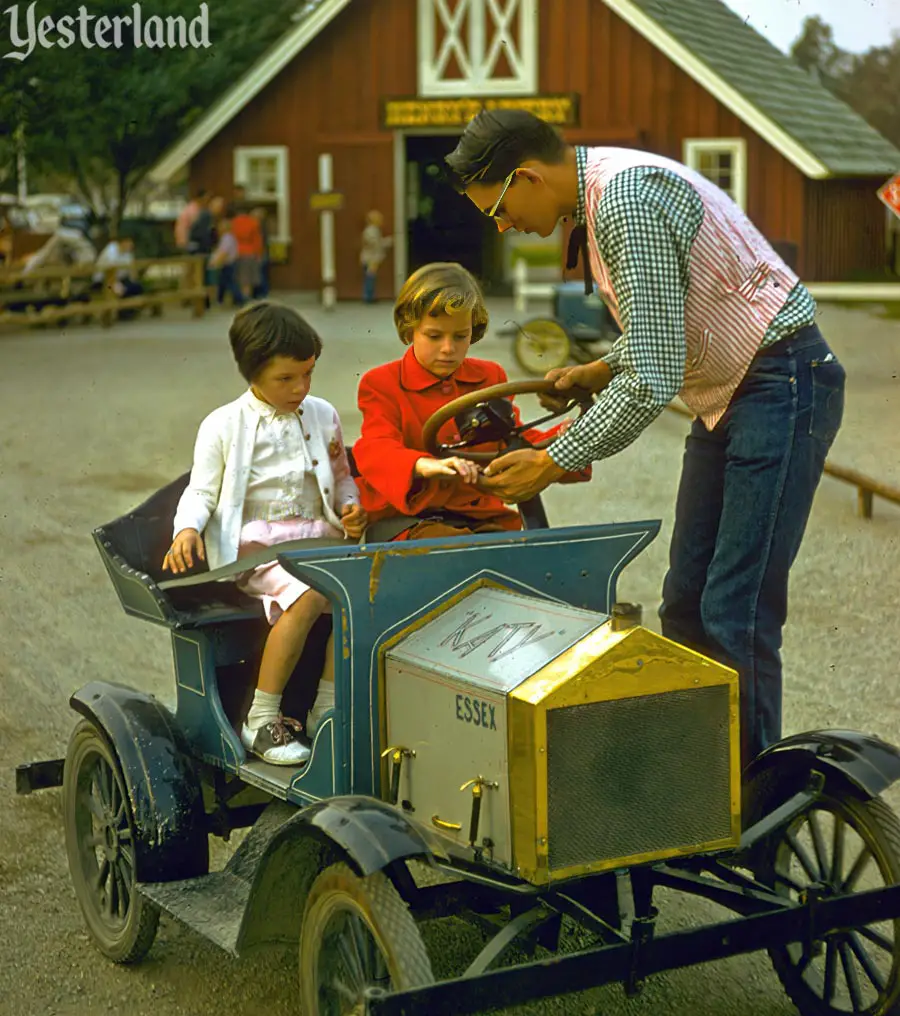
Photo by Charles R. Lympany, circa 1960, courtesy of Chris Taylor Young drivers getting final instructions |
|||
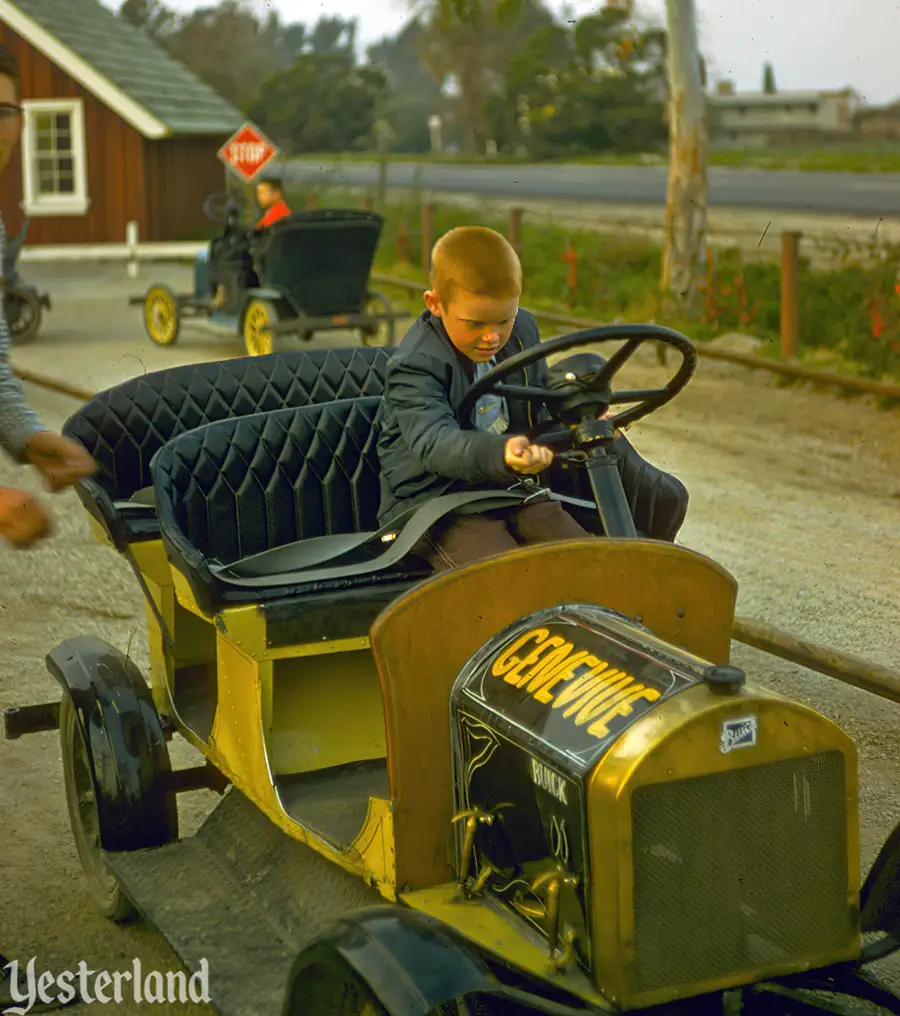
Photo by Charles R. Lympany, circa 1960, courtesy of Chris Taylor Lever on the steering column |
|||
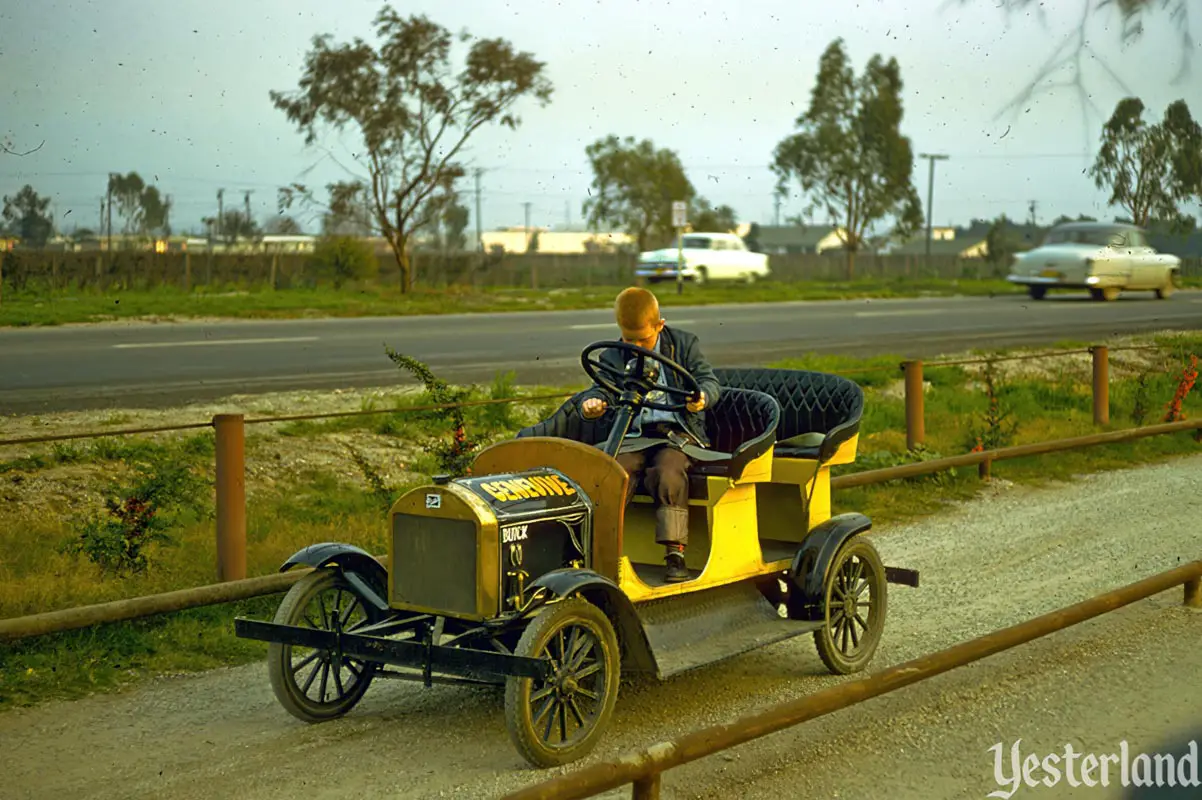
Photo by Charles R. Lympany, circa 1960, courtesy of Chris Taylor Stalled? |
|||
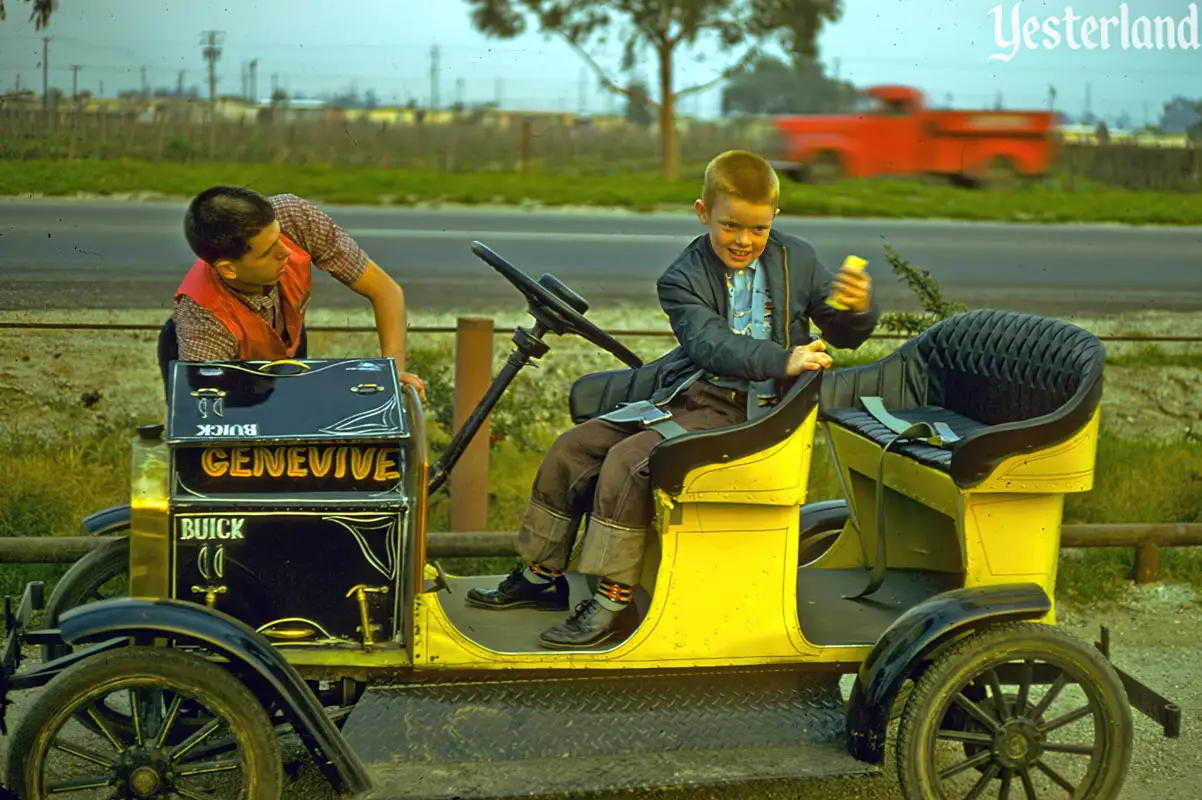
Photo by Charles R. Lympany, circa 1960, courtesy of Chris Taylor Roadside assistance |
|||
|
No, the young man above did not use a yellow cell phone to call AAA. |
|||
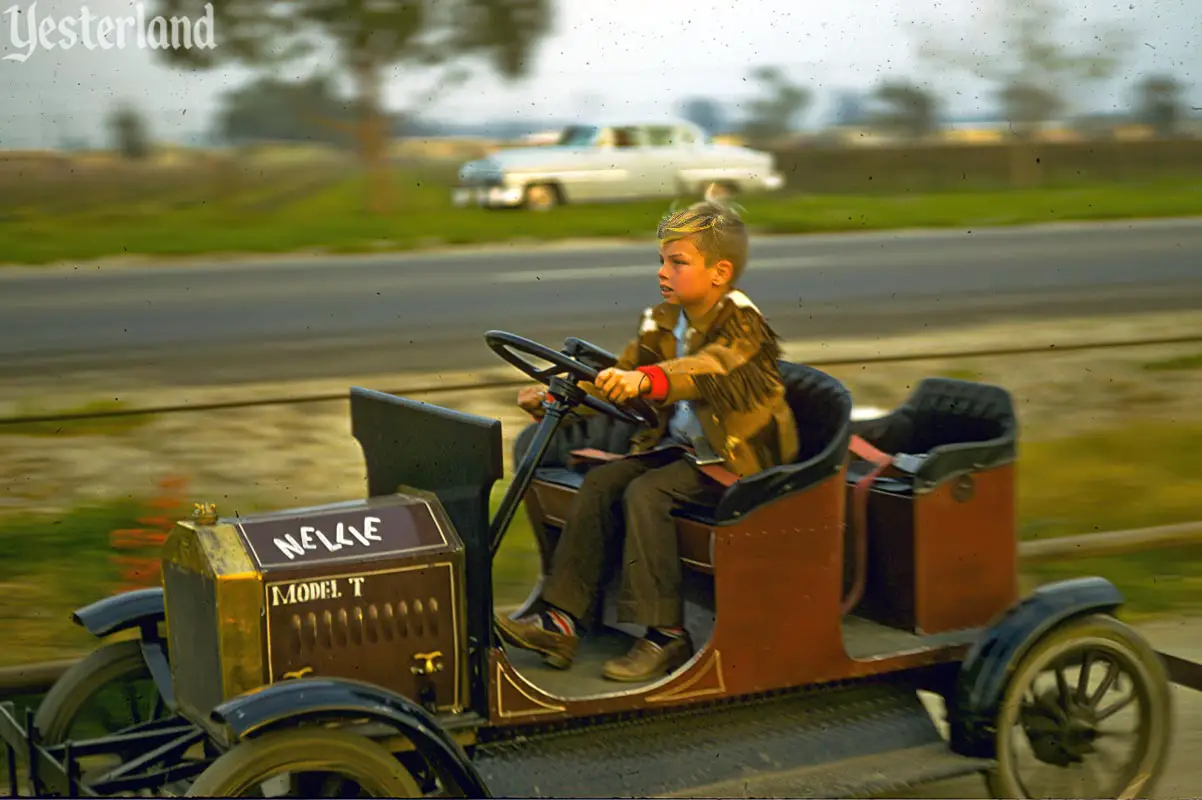
Photo by Charles R. Lympany, circa 1960, courtesy of Chris Taylor Racing against the real cars |
|||
|
There’s no berm around the park. The track hugs Beach Blvd., also known as Highway 39. If you’re a kid, you might want to pretend that you’re on the highway. |
|||
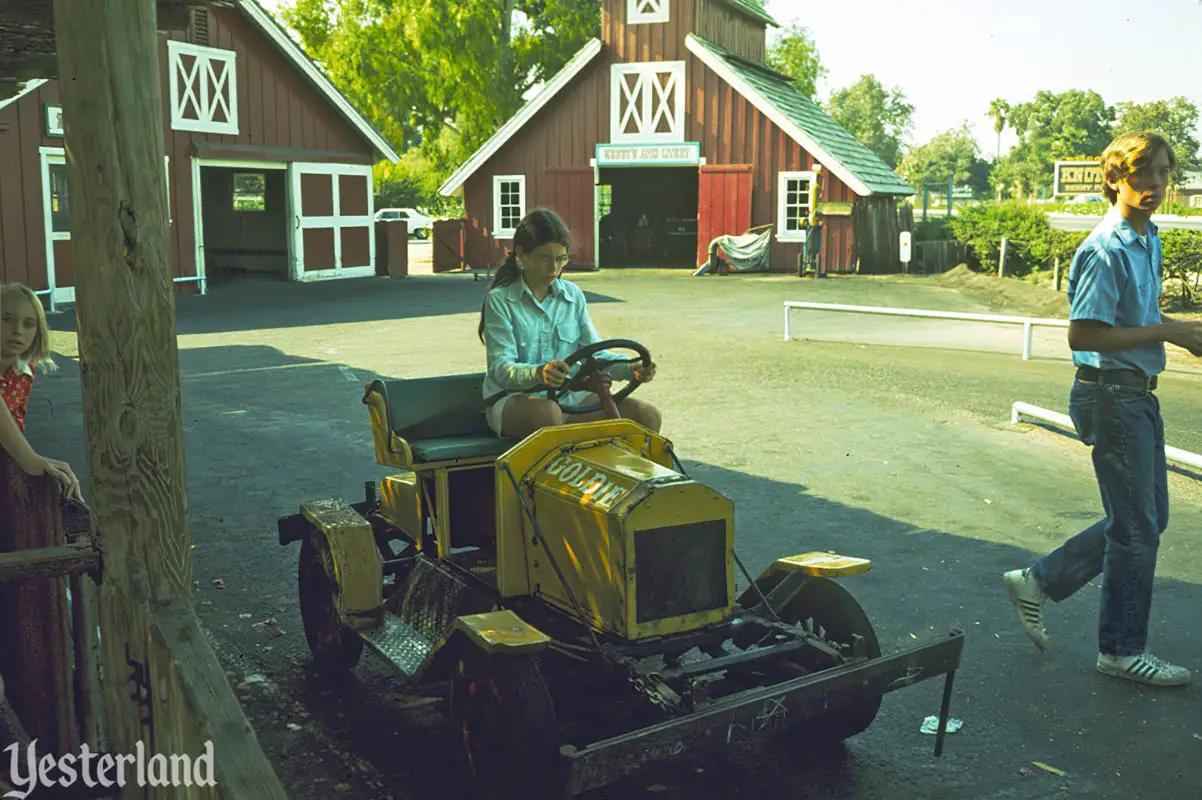
Photo by Charles R. Lympany, circa 1970, courtesy of Chris Taylor “Goldie” |
|||
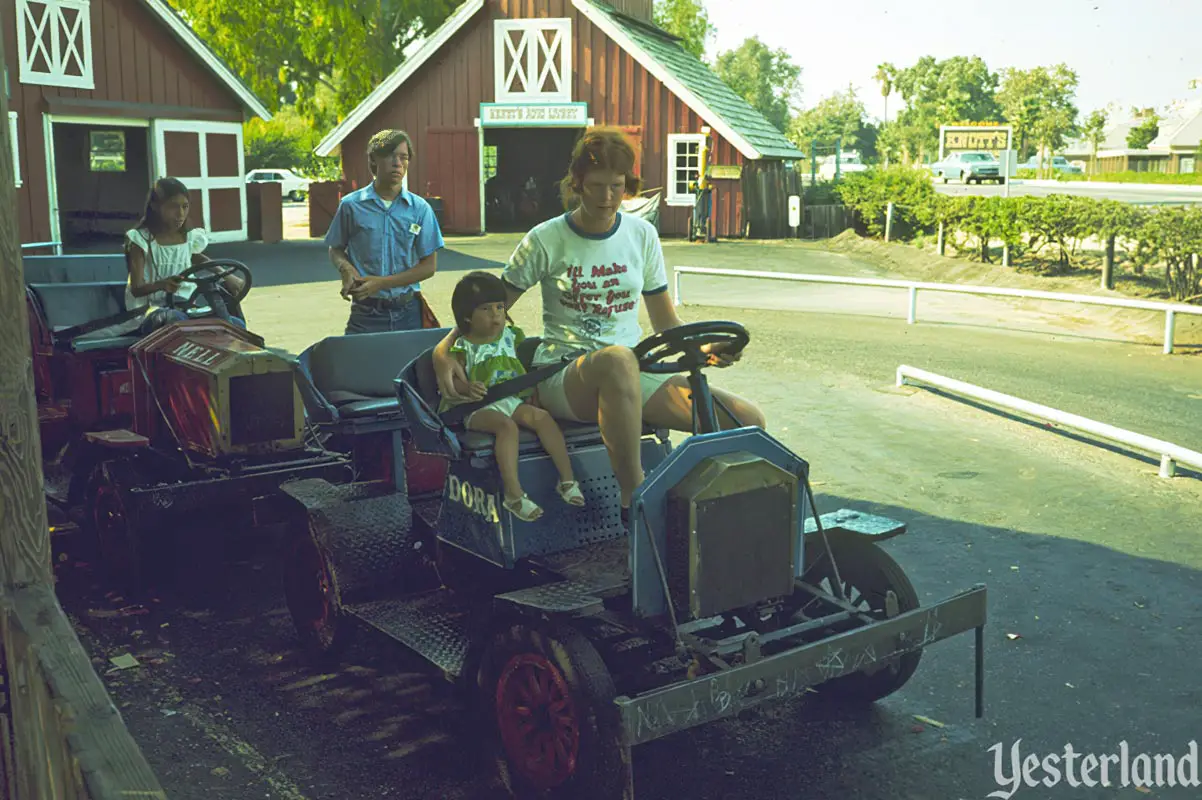
Photo by Charles R. Lympany, circa 1970, courtesy of Chris Taylor “Dora” |
|||
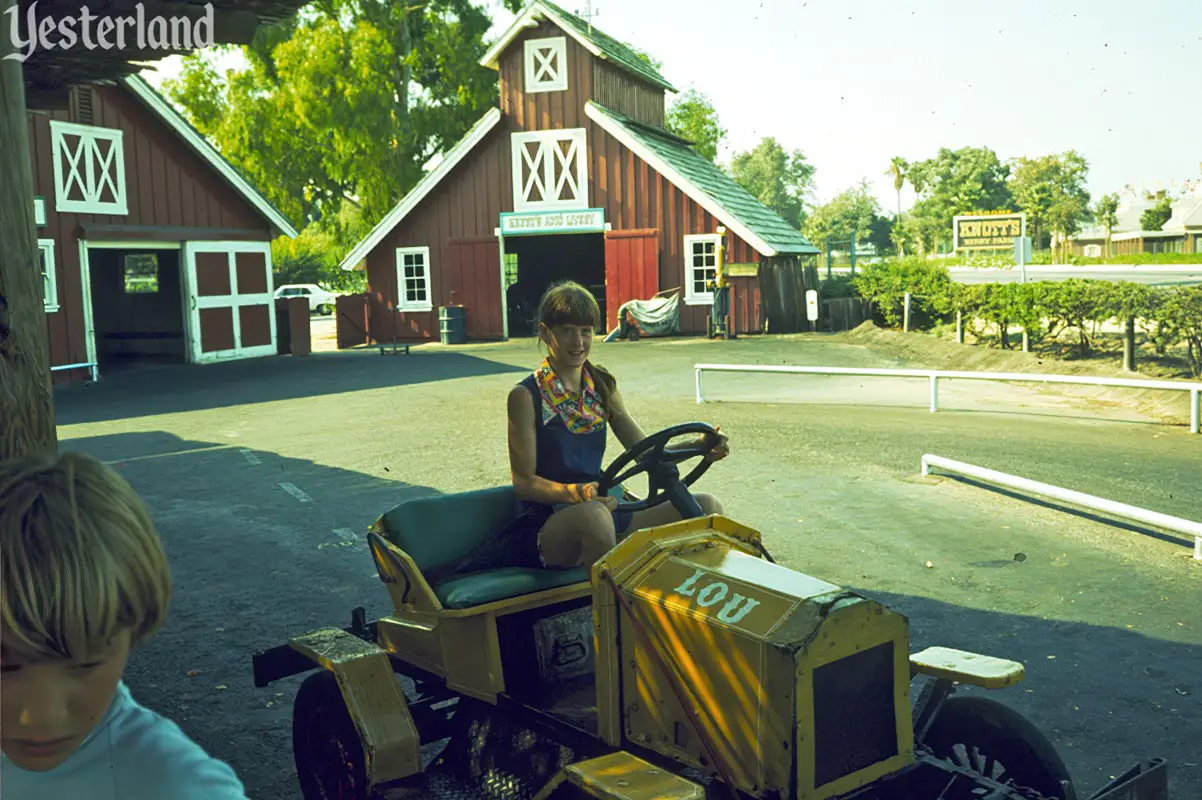
Photo by Charles R. Lympany, circa 1970, courtesy of Chris Taylor “Lou” |
|||
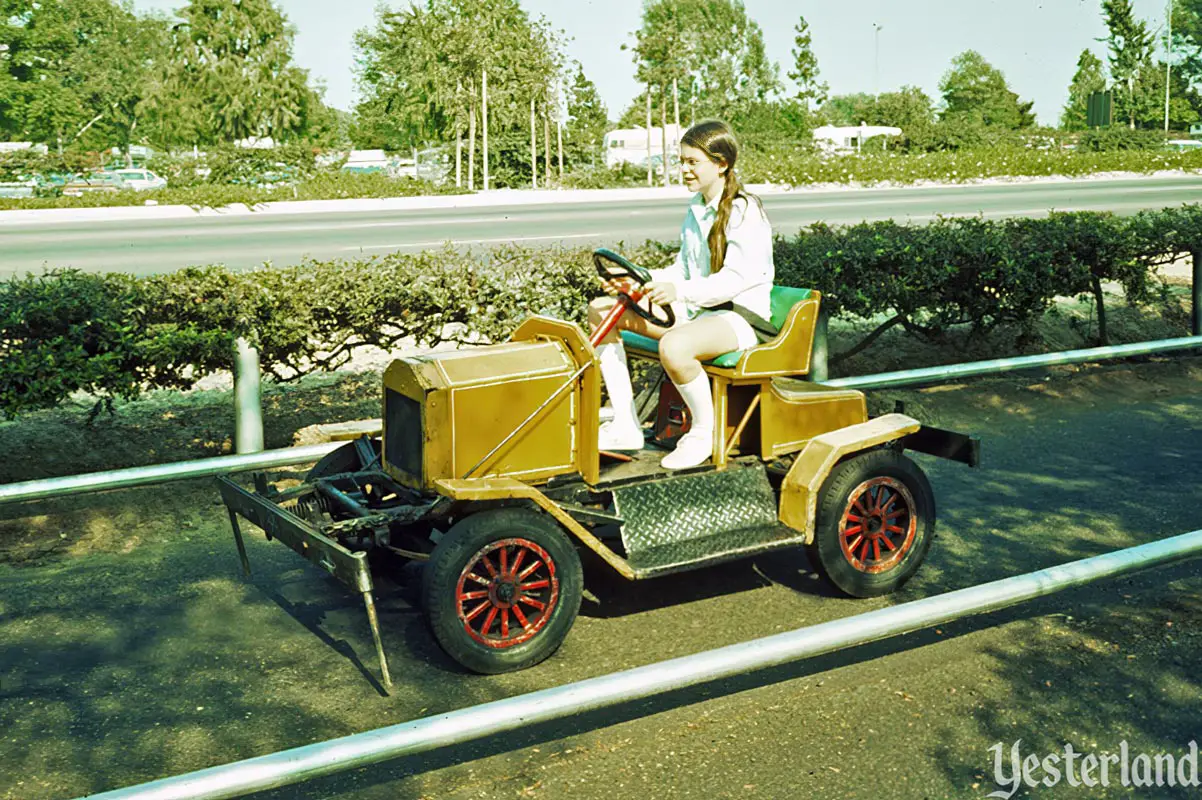
Photo by Charles R. Lympany, circa 1970, courtesy of Chris Taylor Driving “Goldie” along Beach Blvd. |
|||
|
That other park puts you on a highway of Tomorrowland with the Autopia. But here at the Farm, you’re on a farm road of yesterday. |
|||
|
|
|||
|
Henry’s Livery—also called Henry’s Auto Livery Ride—opened at Knott’s Berry Farm in June 1957. Located on the edge of the parking lot at the corner of Crescent Ave. and Beach Blvd., it was far from Ghost Town and the popular attractions of the park. It wasn’t the only attraction in that part of Knott’s. Beginning in 1958, guests could fish for trout at The Old Mill Stream, even closer to the corner of Crescent and Beach. |
|||
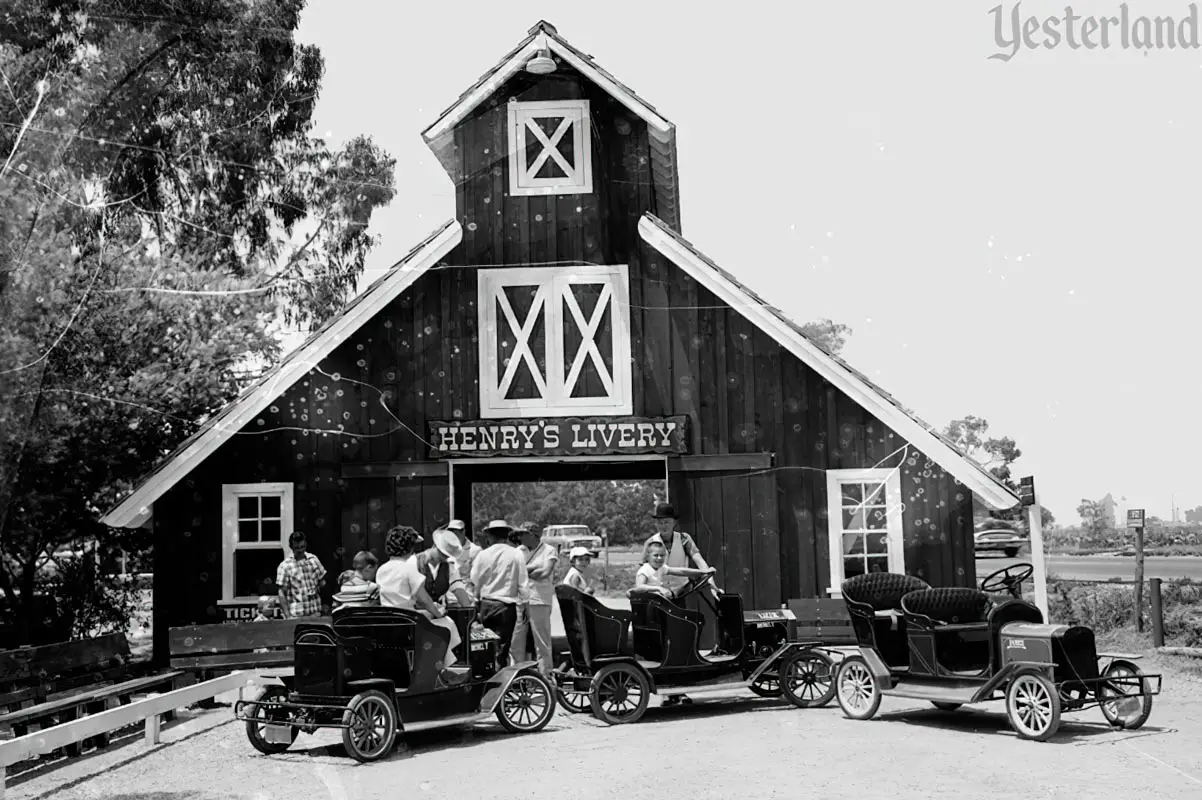
Photo, 1957, courtesy of the Orange County Archives, from the Knott’s Berry Farm Collection Opening year publicity photo |
|||
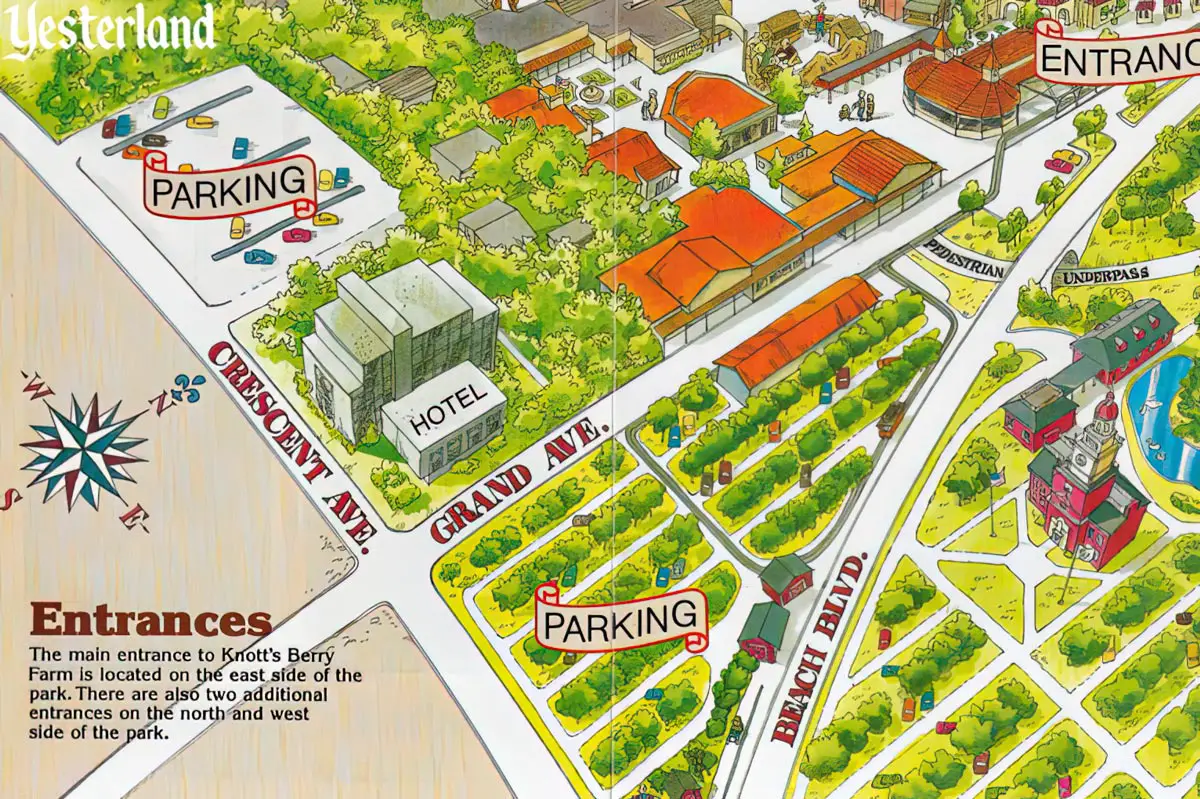
© 1977 Knott’s Berry Farm Detail from the Summer 1977 Knott’s Berry Farm map—long before GhostRider and Knott’s Soak City |
|||
|
The map above shows two red barns between the lower “Parking” label and the “Beach Blvd.” label. That was the starting point of the ride. Guests could get there by walking through the parking lot or riding a San Francisco Cable Car. Or guests who just wanted to go on the ride without doing anything else at Knott’s could park nearby (parking was free). Compared to the intricate track layout at Disneyland’s Autopia, the half-mile track for Henry’s Livery was incredibly simple. It ran parallel to Beach Blvd. until it reached Crescent Ave., where it looped back in the opposite direction. When Knott’s began to charge admission in 1968 (originally 25 cents), Henry’s Livery was far outside the admission area. However, tickets from Knott’s ticket books could be used to pay for the ride. The focus of Knott’s changed to attractions and shows within the paid admission area. The 1975 opening of The Corkscrew, the world’s first modern 360-degree roller coaster, boosted attendance at Knott’s to new highs. The park’s second roller coaster-style thrill ride, Montezuma’s Revenge, opened in 1978. Knott’s had moved beyond Henry’s Livery. In addition, Beach Blvd. needed widening. Knott’s shut down its San Francisco Cable Car ride in 1979, eliminating that transportation to Henry’s Livery. After a run of more than 20 years, Henry’s Livery closed permanently some time around 1980 (although the details seem to have been lost to history). |
|||
|
|
|||
|
Jim Eckes is now a professional television editor, but there was a time when he worked for attraction manager-partner Lauren Beckman at Henry’s Livery. Here are some memories of that time from Jim: I started on April 3, 1977. I remember because it was my first job. Lauren hired me a few months before my 16th birthday. I really wish we had pictures of Lauren. He was quite a guy. He would have us over to his house to swim, and his wife Wilma would bring us popcorn and sodas. Back in those days, the Knott’s Berry Farm Information Office used CB radios to help travelers find their way to the park. Lauren had a CB radio hooked up next to his desk and would jump on and guide people in: “Breaker, Break—This is Greasy Fingers!” His son, Rich, helped manage the place for a few years but when Rich moved on, Lauren was left to open and close the ride. During the summer hours that meant a 9 a.m. to 1 a.m. shift. Lauren would fall asleep in his office around 8 p.m. with his feet up on the desk while watching TV. We would playfully lay garage rags and torn ride tickets all over him. When he woke up, he’d brush them all off and go back to sleep. We were pranksters, but Lauren always took it well. I remember running and getting a pizza for myself on my lunch break. I’d sit in the office with Lauren and watch TV. He’d always lean over at one point and sneak a pepperoni… with his greasy, oily fingers. I believe we ran a crew of two or three guys during the day and two closers at night. We all had our jobs. If you came in in the morning, you gassed and oiled the cars and cleaned them up. The evening and night crew swept the ride area and cleaned the garage. I believe the morning starter got to work the ticket booth in the afternoon. Lauren also had one of those old Coca-Cola machines that required you to pull the handle and it would drop a small 8-oz. bottle down for you. We had crates of Coke bottles there at all times. By the way, after the ride closed permanently, Lauren let me take the sign that was over the barn door—the later one with the green edging. It ended up bolted to the barn at my folks’ house in Northern California till the mid 1990s, when it finally just fell apart. Lauren passed away in 1992 at the age of 65, I believe. — Jim Eckes, July 2016 Jim, thank you for sharing that with Yesterland readers! |
|||
|
|
Click here to post comments at MiceChat about this article.
© 2022 Werner Weiss — Disclaimers, Copyright, and Trademarks Updated September 30, 2022 |
||